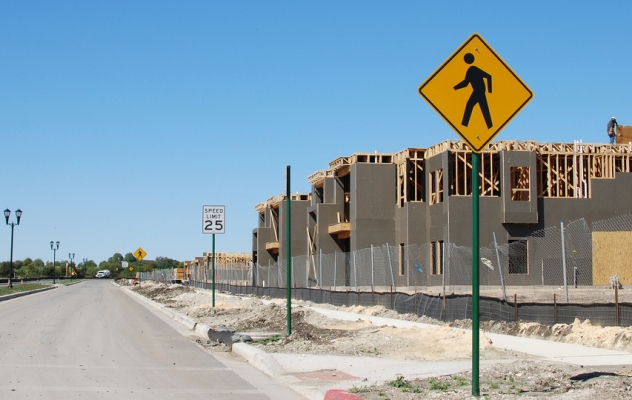Suburban developments can build in walking and cycling

In many cases, living in suburbia means relying on an automobile for most trips, even short trips to nearby stores. If housing developments incorporated better paths and sidewalks, however, would anyone use them?
Researcher Nico Larco found that people who live in well-connected developments are significantly more likely to walk and bicycle than those in developments only accessible by automobile. He details his findings in this OTREC report.
Larco, an assistant professor of architecture at the University of Oregon, found that people who live in well-connected developments walked to their nearby commercial strips nearly twice as often as did people in less-connected developments. In addition, a greater percentage of residents in well-connected developments reported sometimes walking or cycling.
Despite suburbia’s reputation for large single-family homes, more than a quarter of suburban housing units are higher density. In fact, the suburbs are home to more than 9 million multifamily housing units, with 5 million more projected for the last 20 years. Although these units tend to be near commercial centers, a lack of pedestrian and bicycle infrastructure makes trips using these modes difficult.
For this research project, Larco developed criteria for measuring connectivity in trips taken from, to and through multifamily suburban developments. Studied developments were rated as “well connected” or “less connected” based on these criteria.
Through surveys and a focus group in the Eugene, Ore., area, Larco gauged residents’ habits and opinions on travel. He also analyzed codes and practices in cities acoss the United States and held a focus group of planners and developers of suburban multifamily housing.
The survey results challenge popular perception of suburbia. Across all studied developments, more than a third of all trips to nearby commercial strips are taken on foot, with a total of 38.7 percent taken on foot or by bicycle.
In well connected developments, the percentage of cycling or walking trips is 44.7 percent, compared with 54 percent driving trips. In one well connected development, walking or cycling made up 72 percent of all trips. In addition, these numbers actually understate the active trips taken, in that they do not include people without access to a car.
The study revealed that there is a substantial amount of walking in and around suburban multifamily development, and that more connected sites result in more walking. How much people walk depends on how connected the sites are.
The results should prove instructive for those seeking to increase active transportation trips as well as those looking to plan and build walkable developments. They also show how retrofitting existing developments for better connectivity can help encourage walking.
Click here to learn more about the project.
